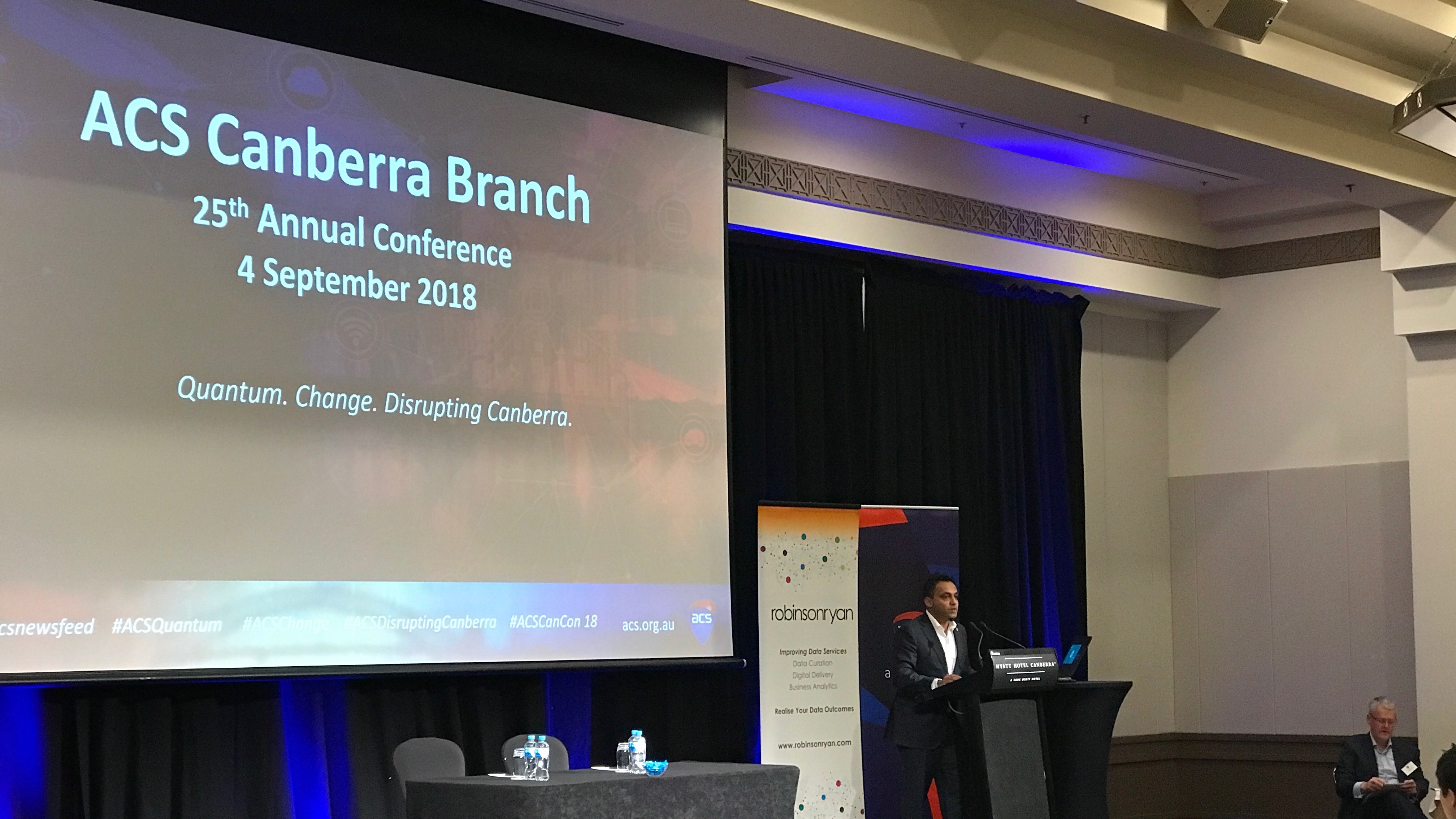ACS President Yohan Ramasundara has called on Australia to step away from traditional export models and start making tracks as a “clever country” in the global economy.
Speaking at the 25th annual ACS Canberra Conference, Ramasundara declared the need for Australian economy to enter into transition.
“Our biggest exports remain iron ore and coal,” he told the crowd of 300.
“There is nothing smart in our top ten exports. So my first message to you is that we must get much better at identifying, developing and retaining talent and converting ideas into tangible realities.”
He used the example of high-tech naval manufacturing to illustrate Australia’s sometimes counterintuitive approach to innovation.
“Our nation is an island and reliant on its shipping-lanes. Yet, over $100 billion Australian dollars has gone as follows: $50 billion to the French for submarines; $35 billion to the English for Frigates; $13 billion to the Spanish for Air Warfare Destroyers, Oiler Replenishment ships and HMAS Canberra and Adelaide and $3.5 billion to the Germans for Off Shore Patrol Vessels. That’s just the money spent on capital ships for our Navy. Another $7 billion also went to the Americans for naval drones.
“With the exception of Austal, we appear incapable of designing a ship or boat. Critically, these foreign naval vessels are also packed with very advanced technologies. With only a few exceptions, we import most of these technologies, as well.
“When we buy smart things from overseas, it says two things: we missed an opportunity, and should we claw back that expenditure?”
Ramasundara refused to use Australia’s size as an excuse for missed opportunities, explaining many of our current submarines come from Sweden – a country with a population less than half the size of Australia’s.
He also questioned Australia’s willingness to allow top ICT talent to move over to Silicon Valley “and struggle valiantly against the odds,” explaining such an approach is a barrier to Australia producing a technology company of the same calibre as Google or Facebook.
An ACT local himself, Ramasundara also spoke passionately about his vision for Canberra in the future.
“Tomorrow’s Canberra must be better than today,” he said. “How we define ‘better’ is crucial.”
“My Canberra of tomorrow recognises itself as the biggest inland city in Australia. An exemplar and beacon for other regional centres in this nation. A prosperous smart city that lives in harmony with nature. A place vying to be the smartest city in Australia and beyond. A city that continually learns, investigates its failures without fear or favour and institutes changes that prevent repetition.”
To get here, however, the nation’s capital needs to look beyond its traditional purpose, he explained.
“Crucial to Canberra’s future is that it retains a purpose beyond being the nation’s capital," he said.
“Canberra, like Finland, has limited natural resources. Finland invested its earnings and created one of the best education systems in the world. Their number one export is electronics, machinery, vehicles and high-technology products. Tiny Finland built Nokia. In a 2004 OECD comparison, Finland’s high-tech manufacturing ranked second largest, after Ireland.
"Canberra could also be a hot bed of innovation and high-tech manufacturing.”










